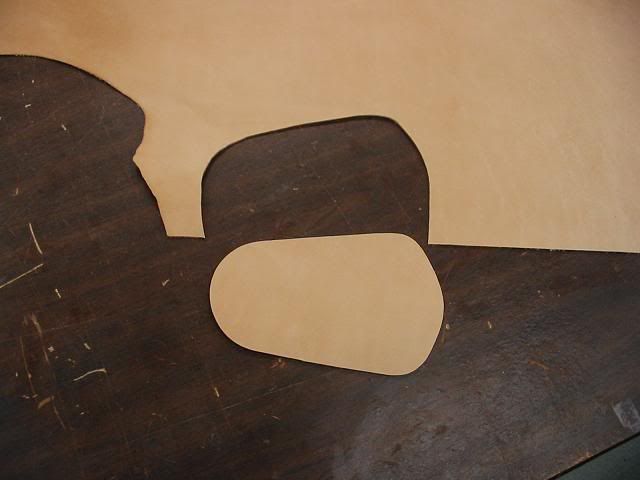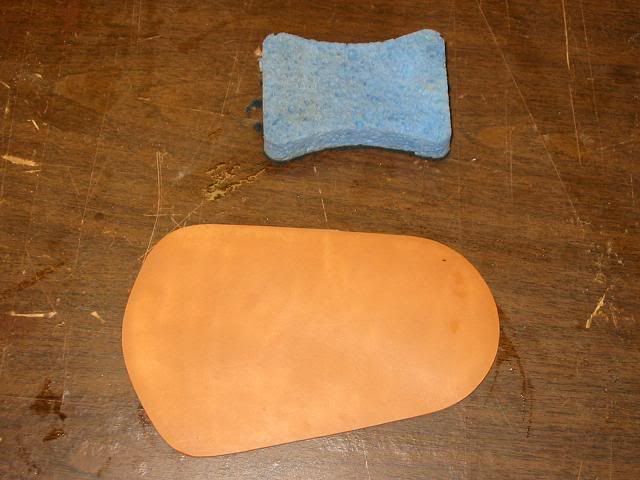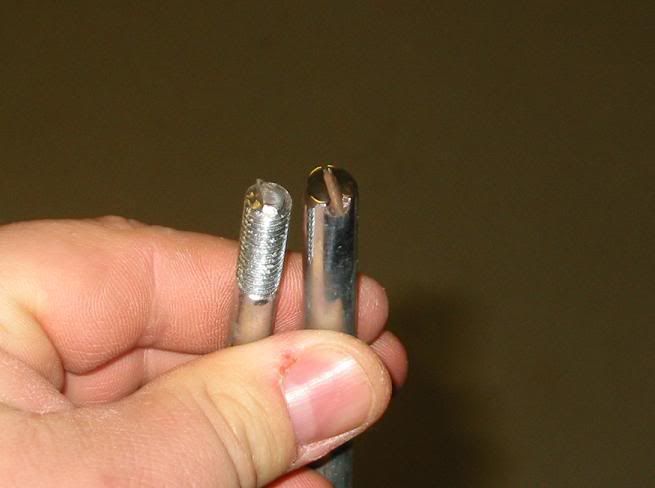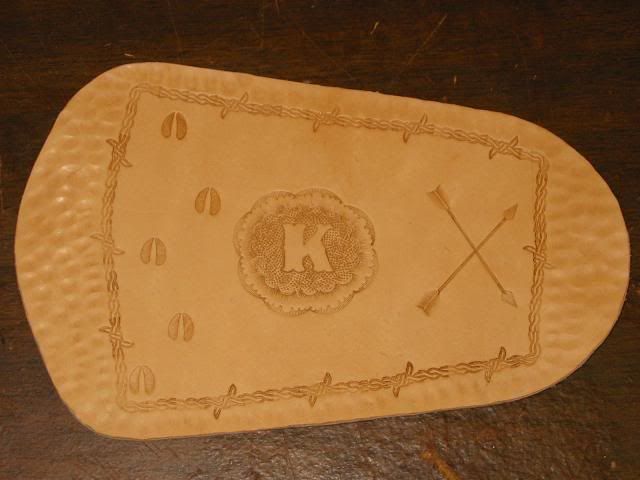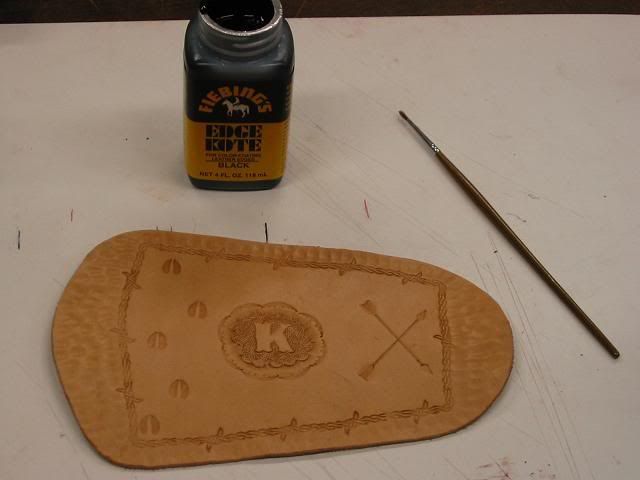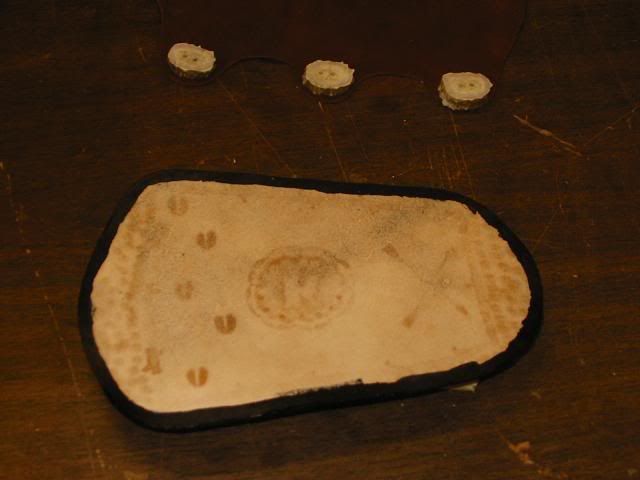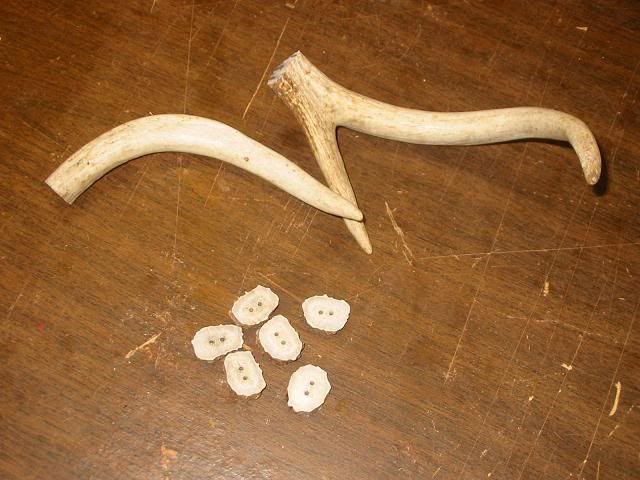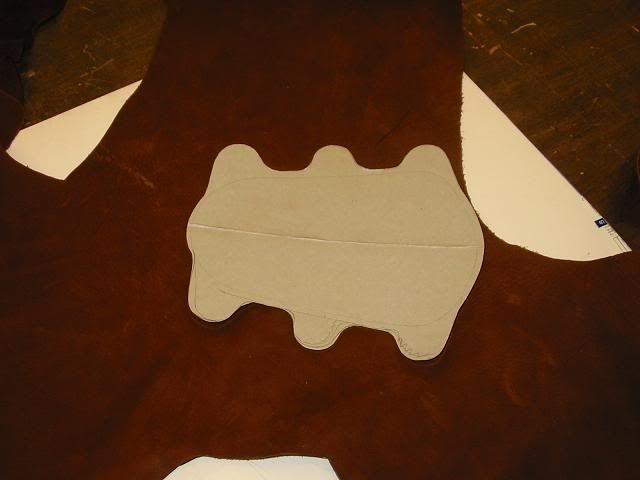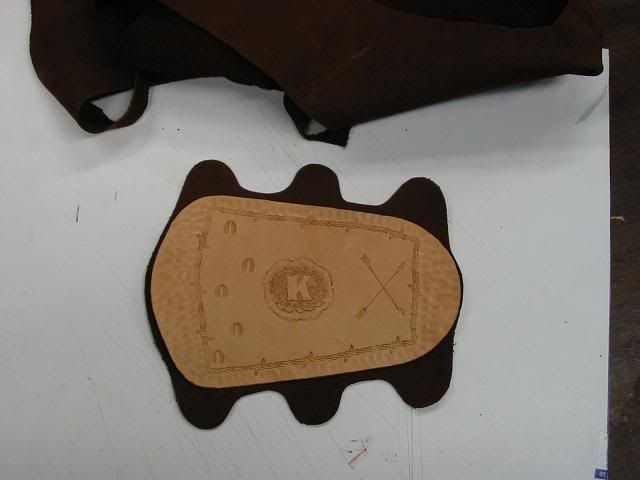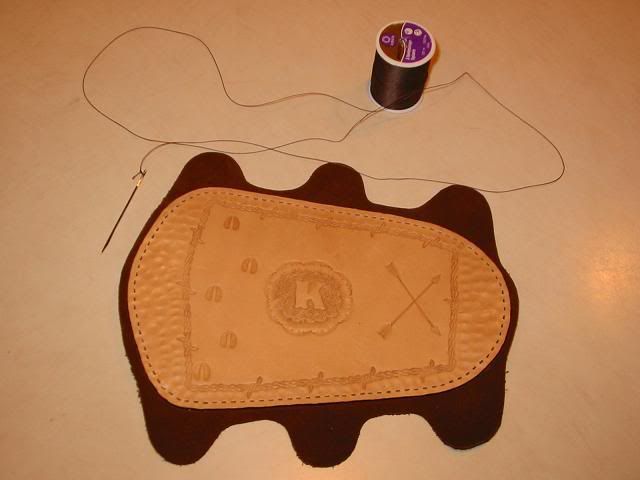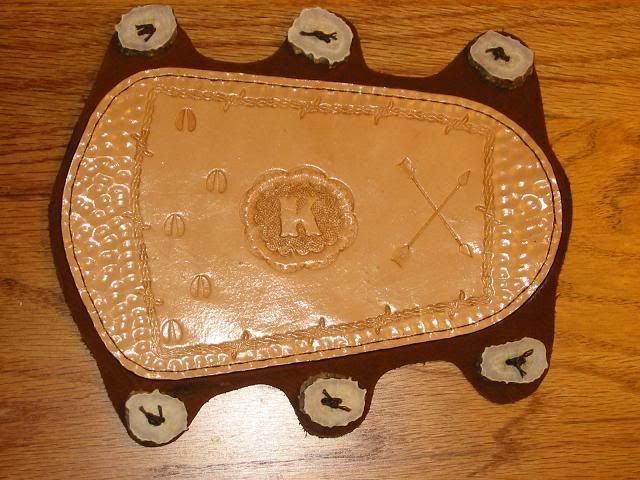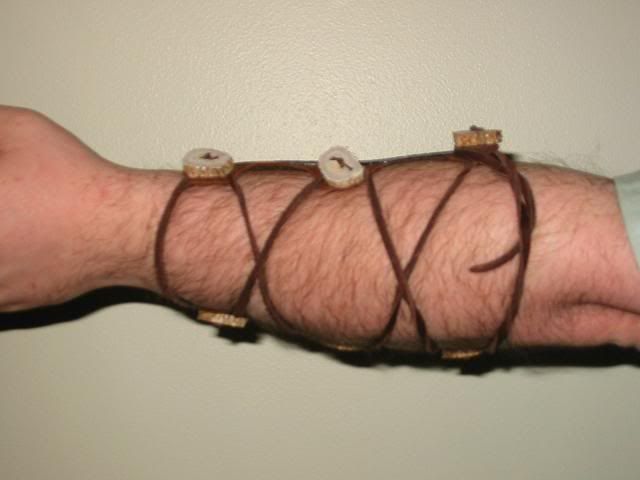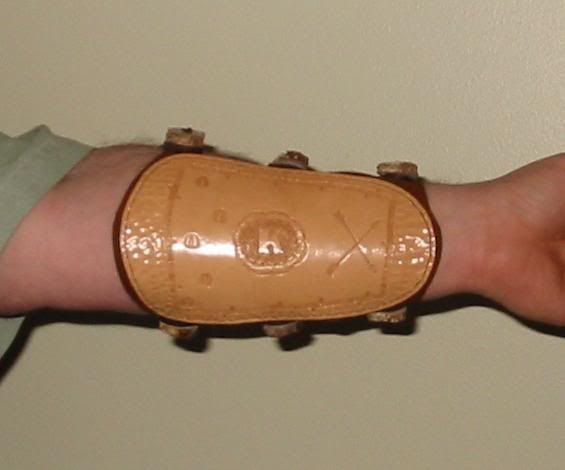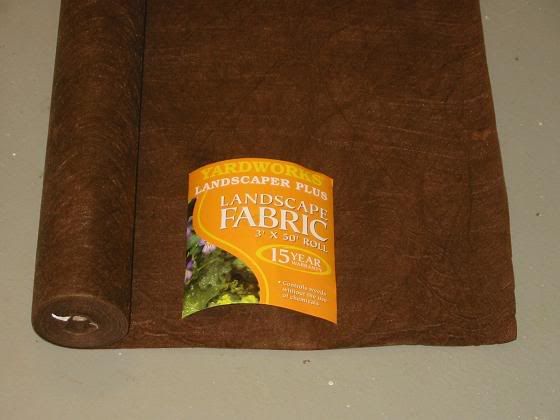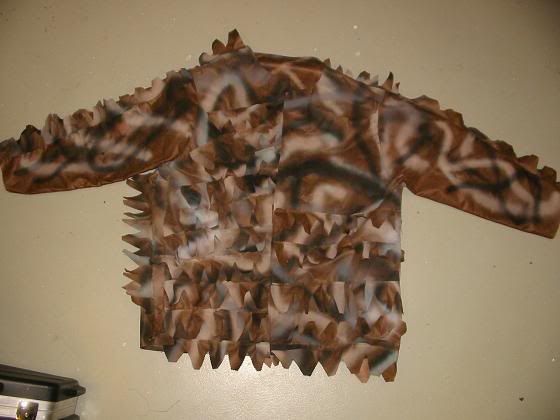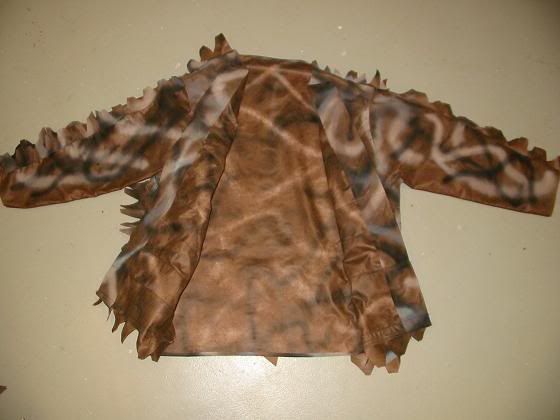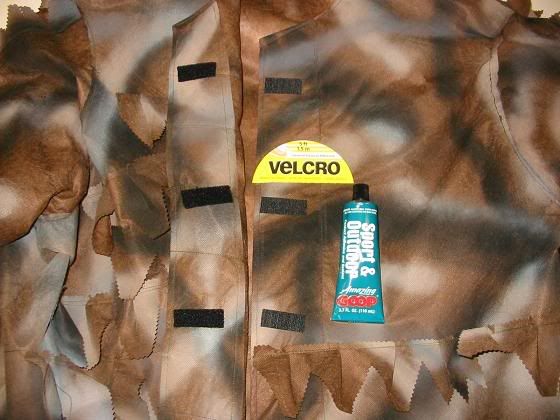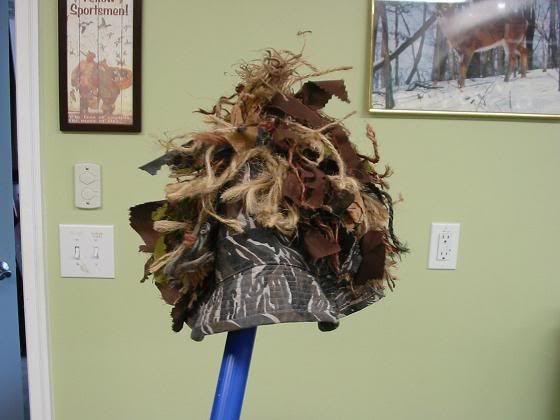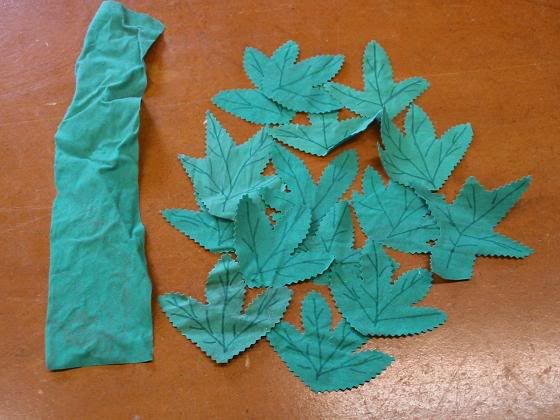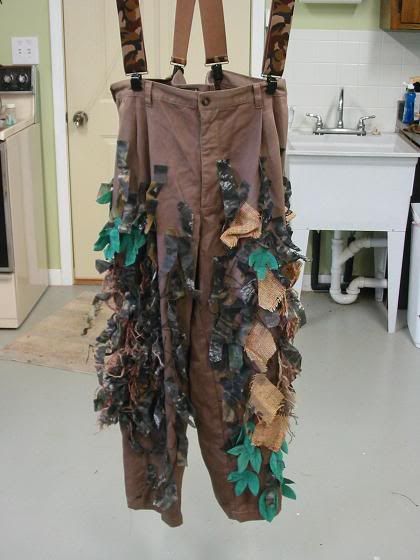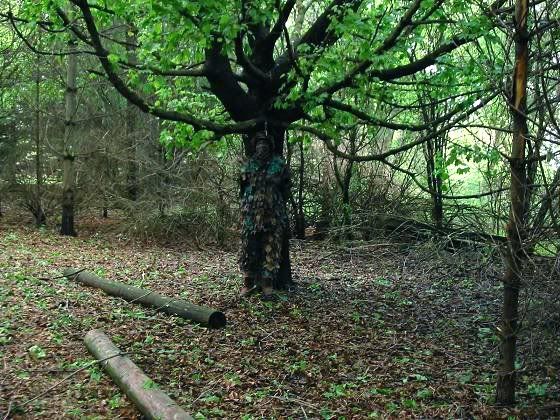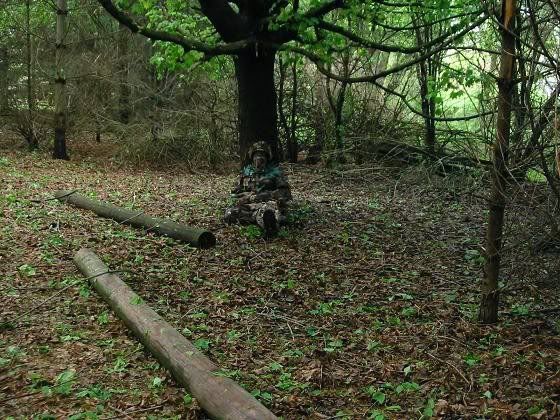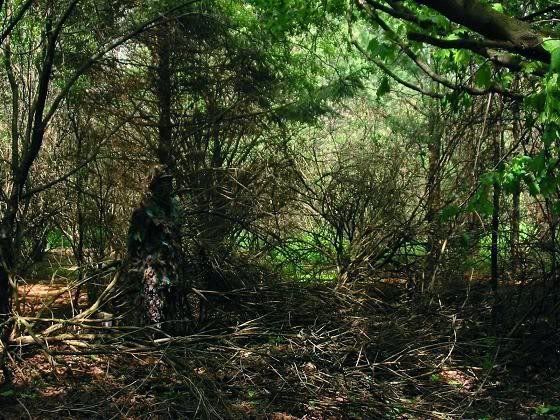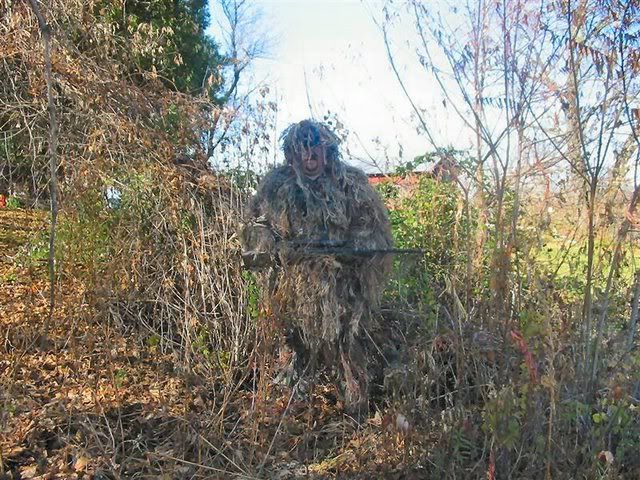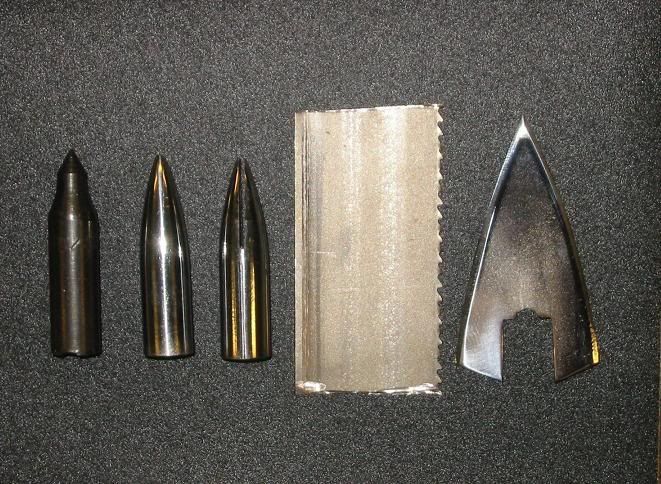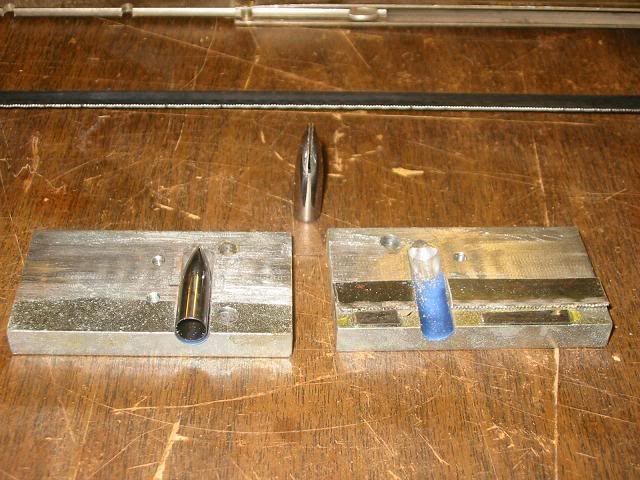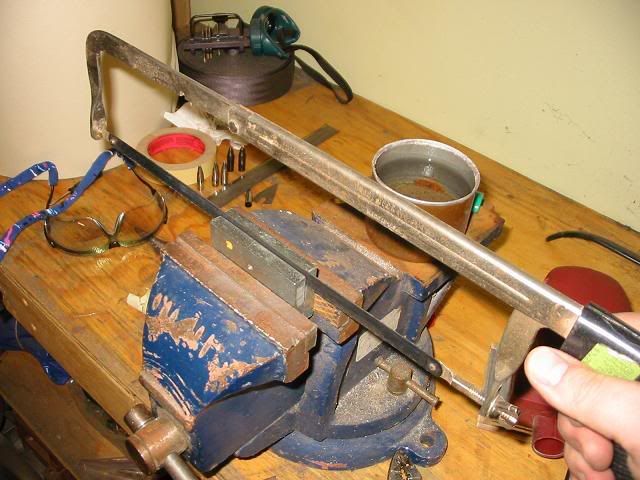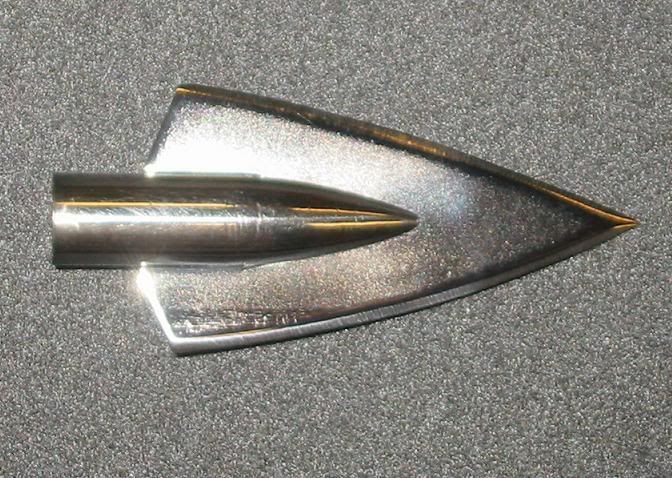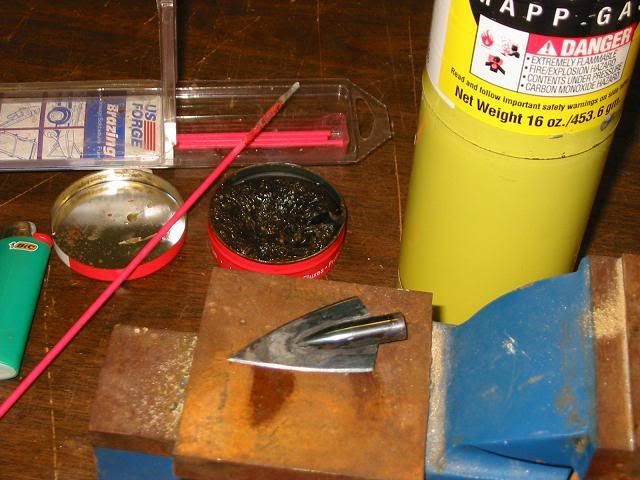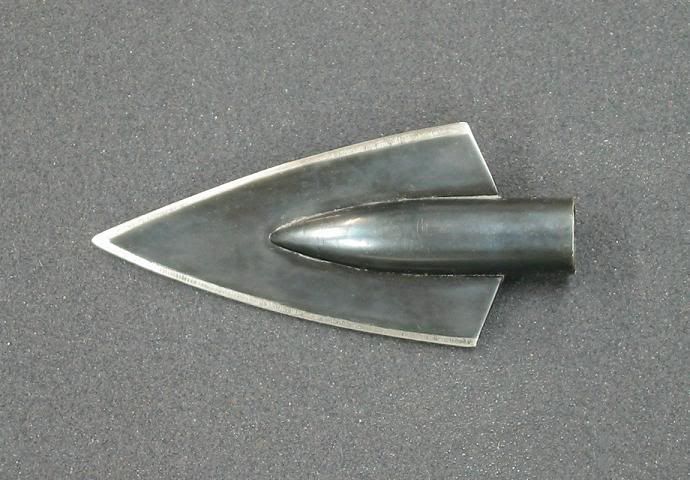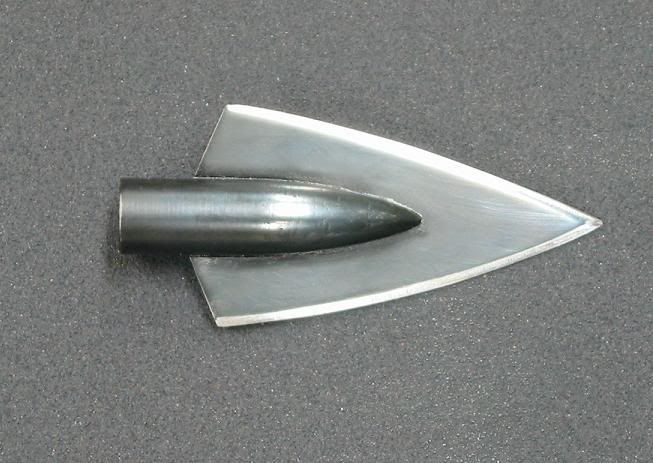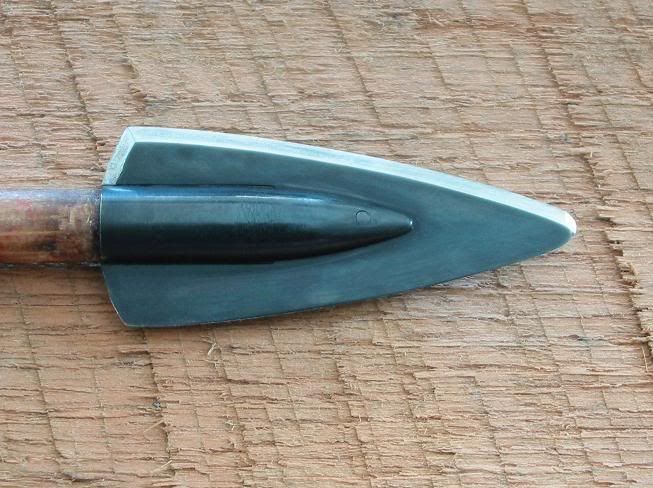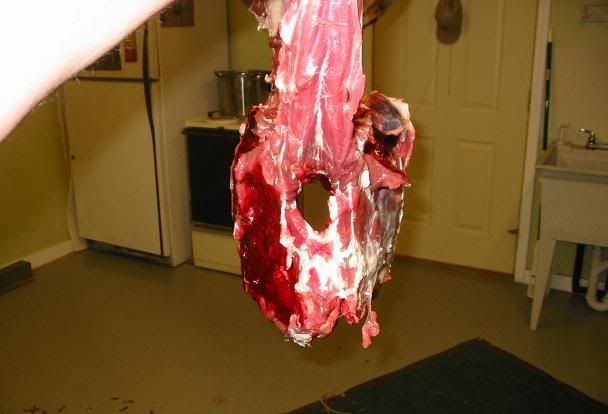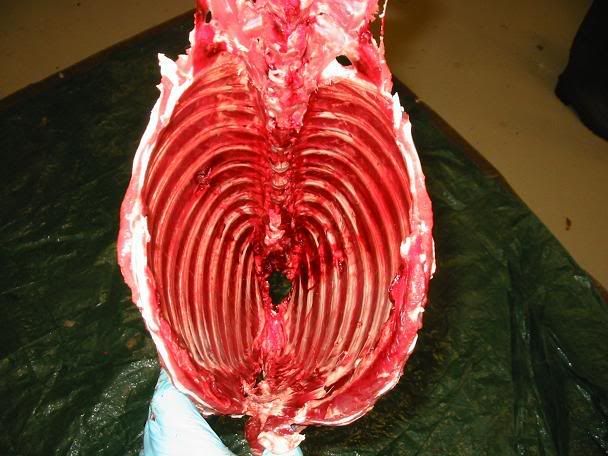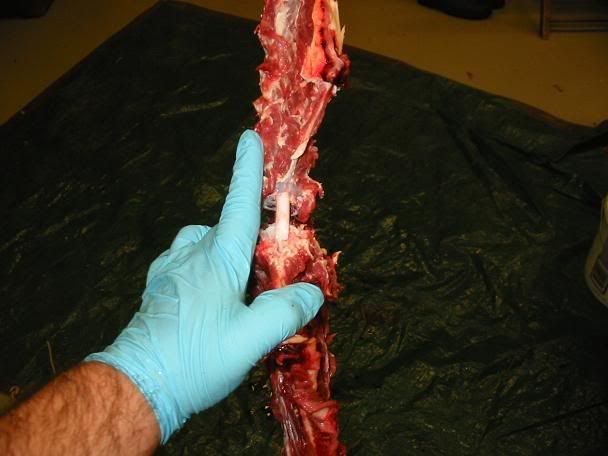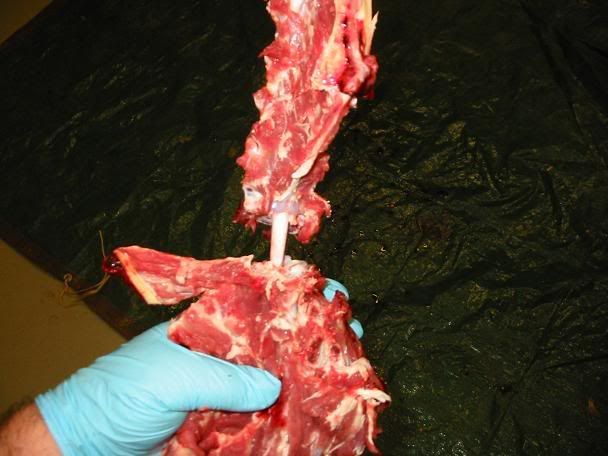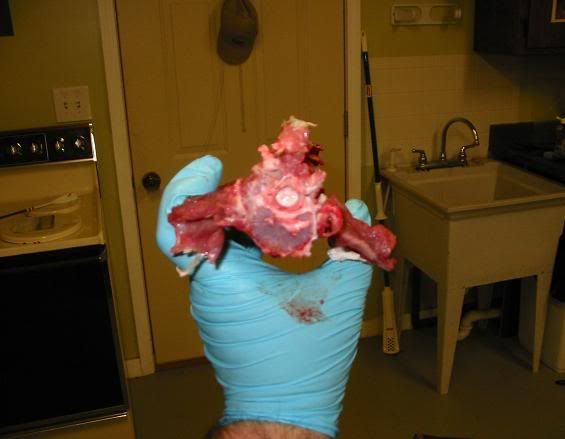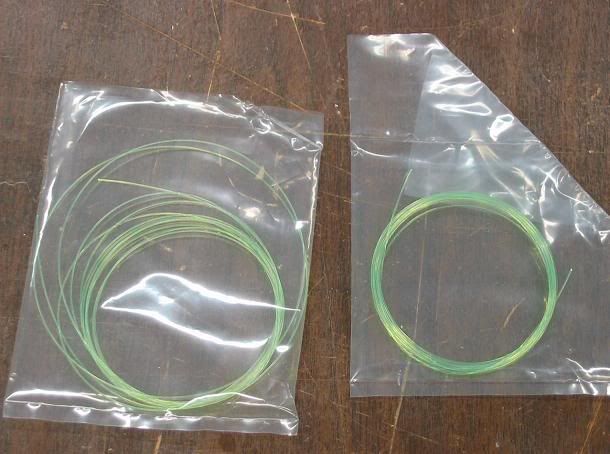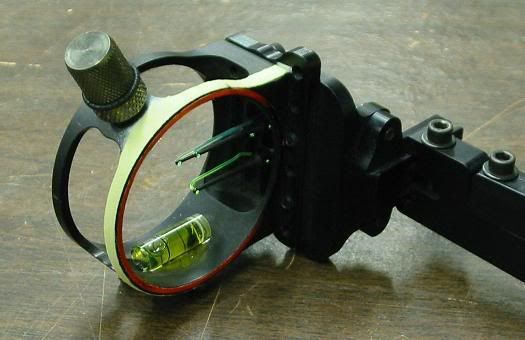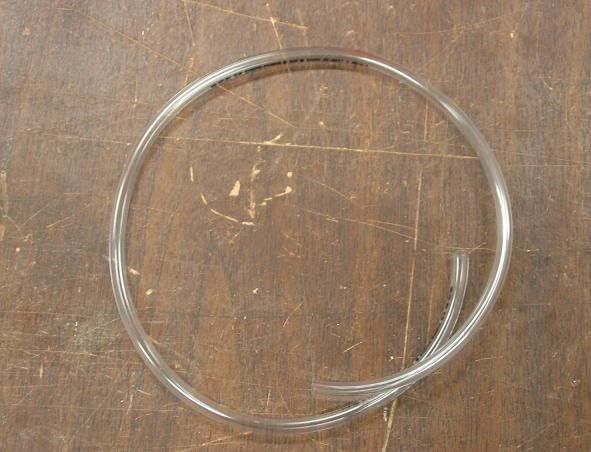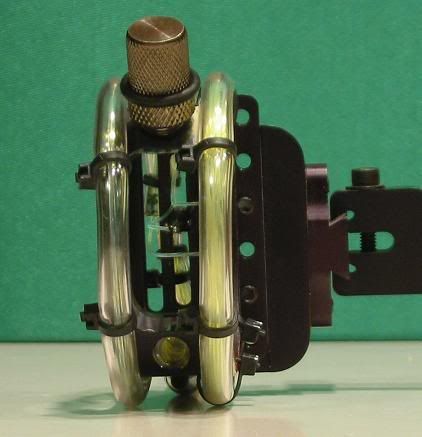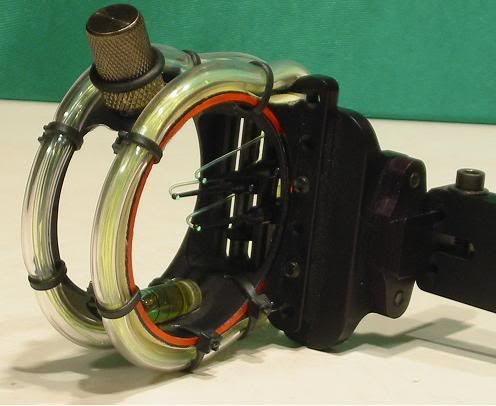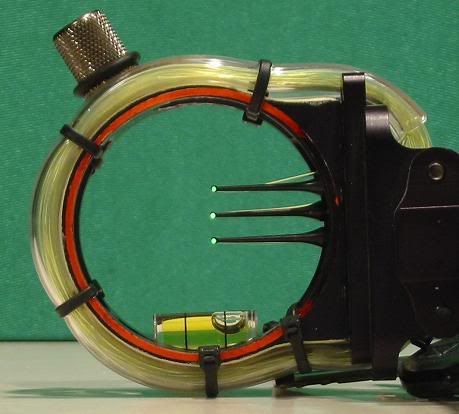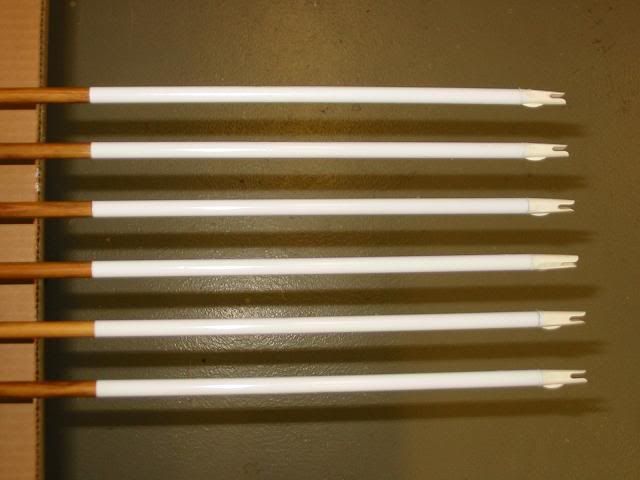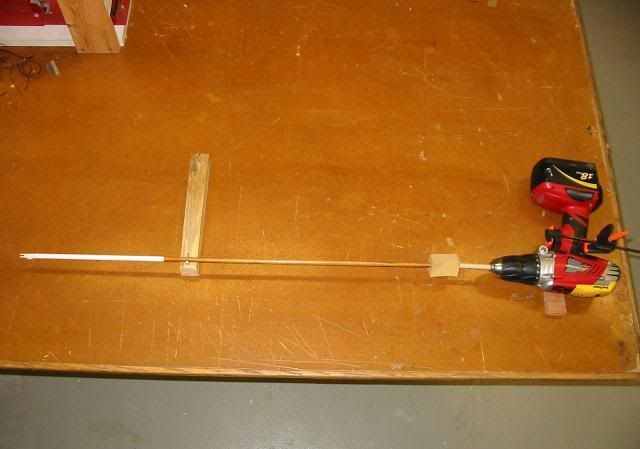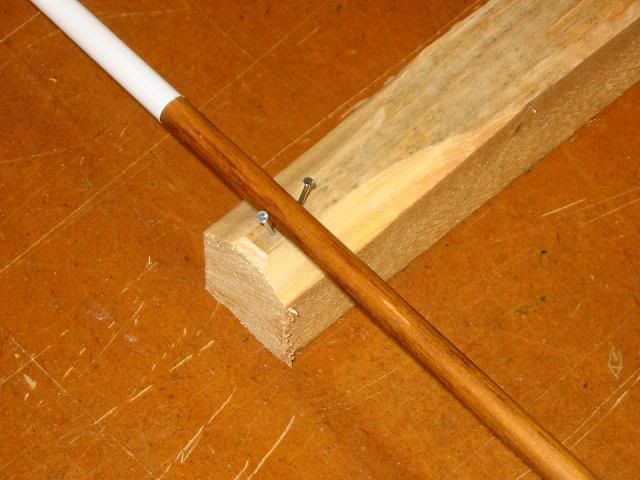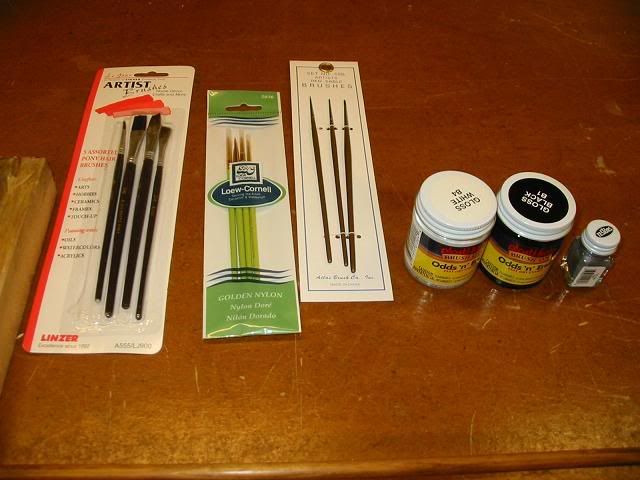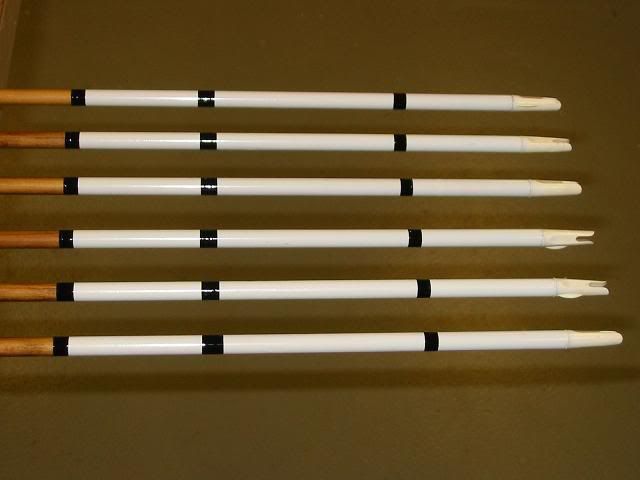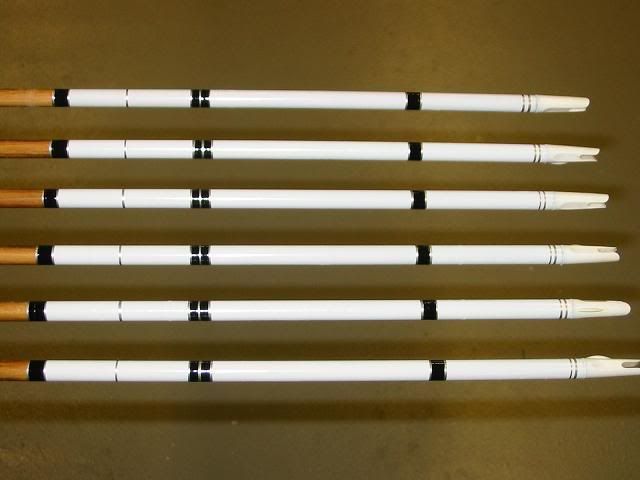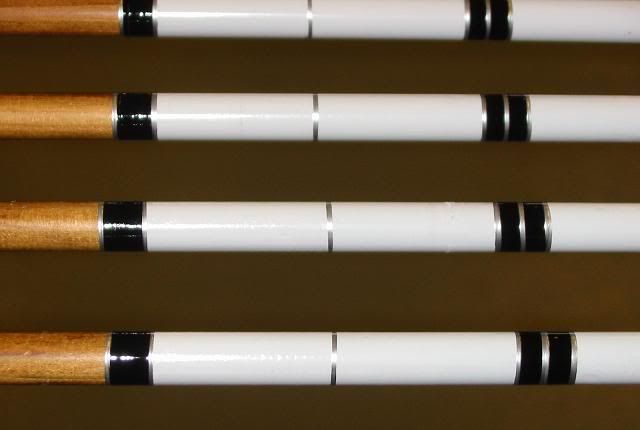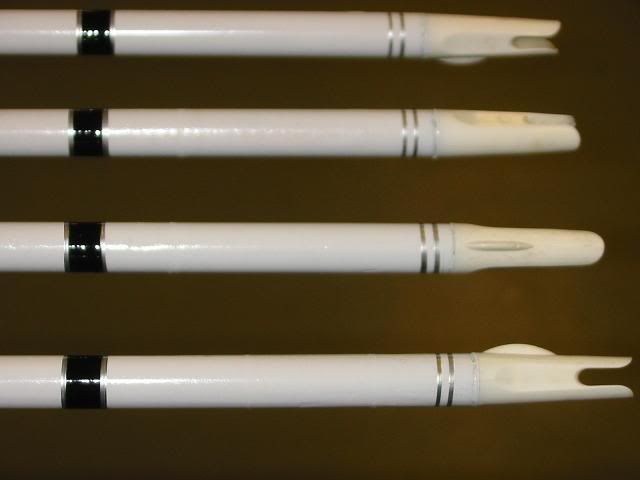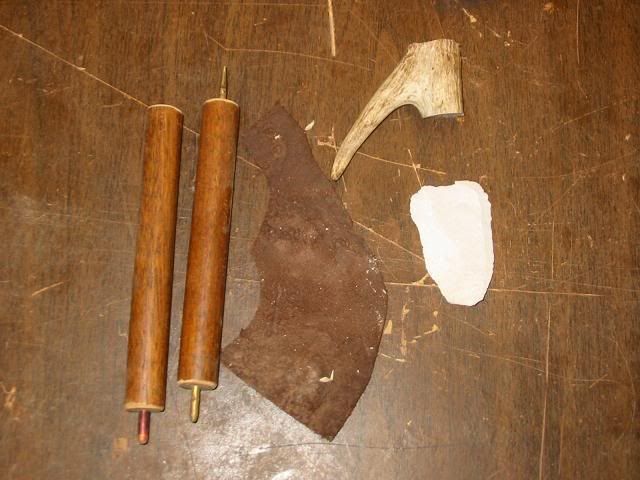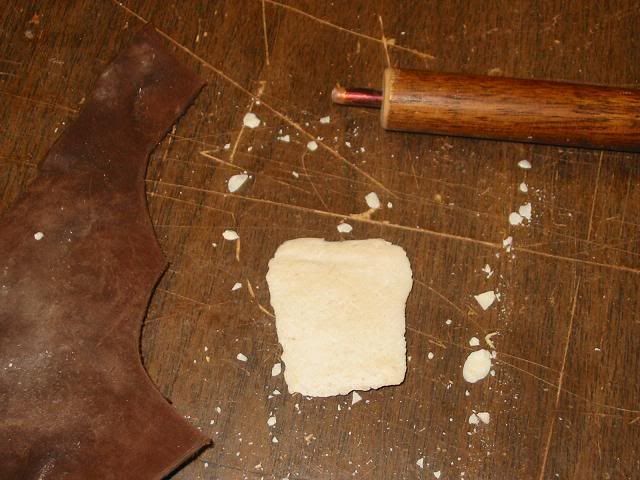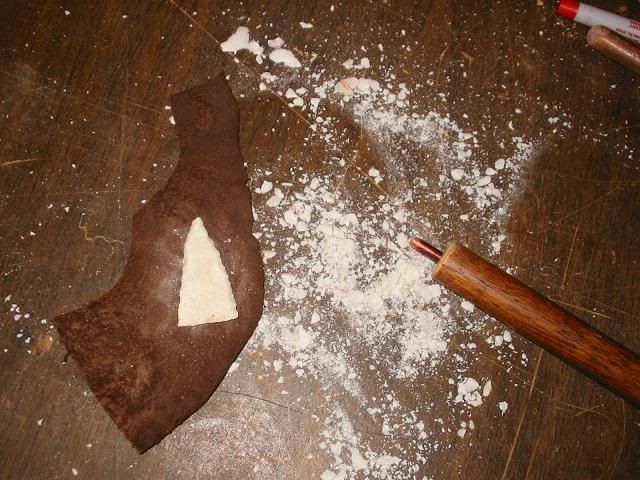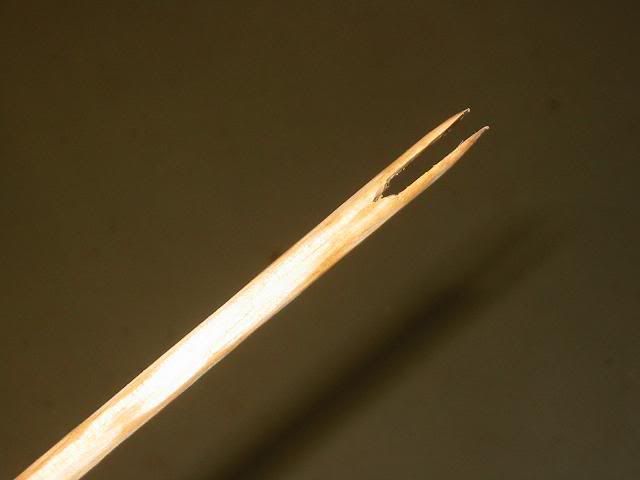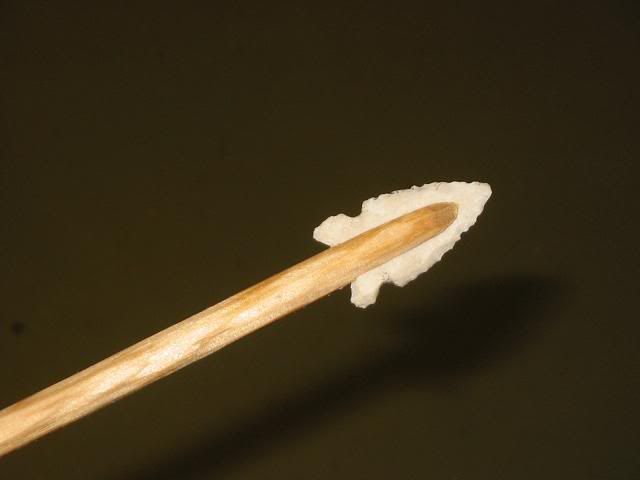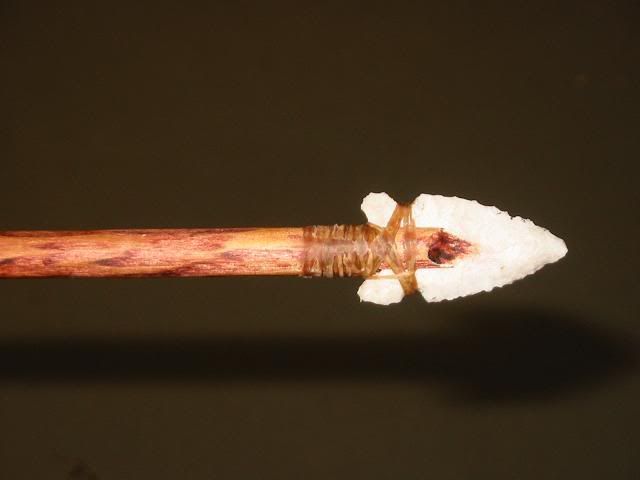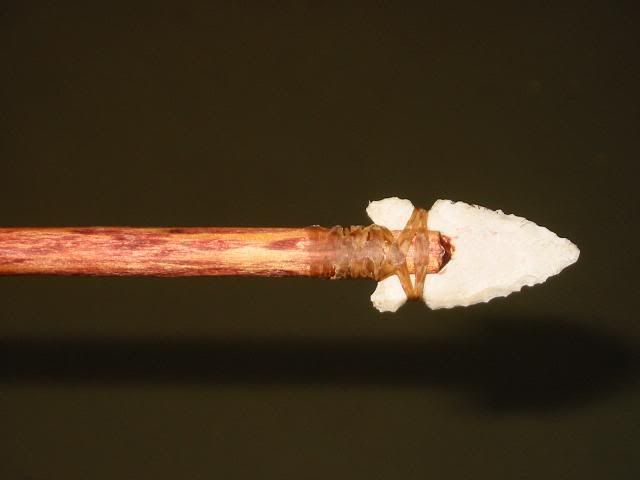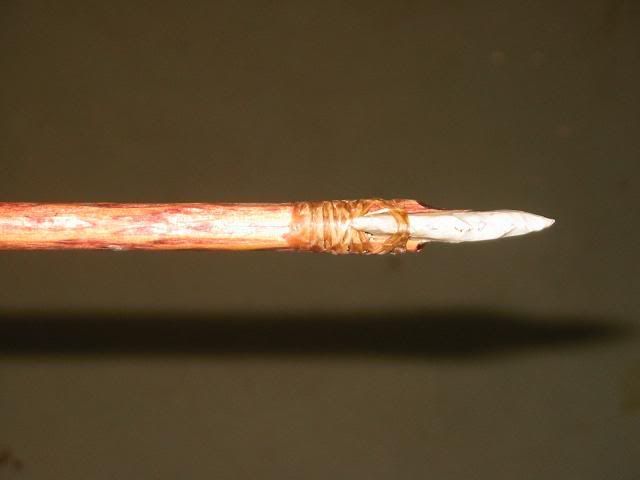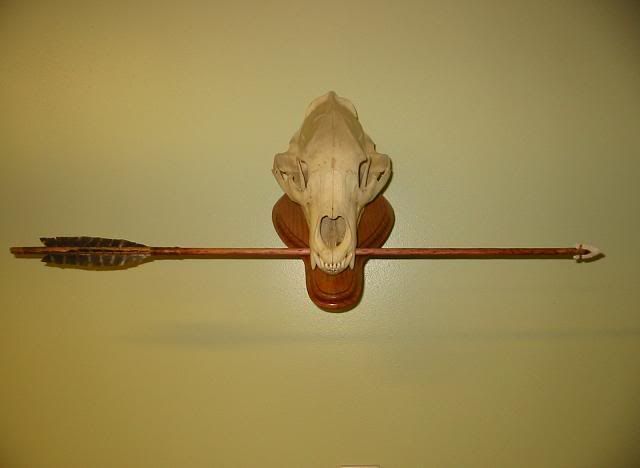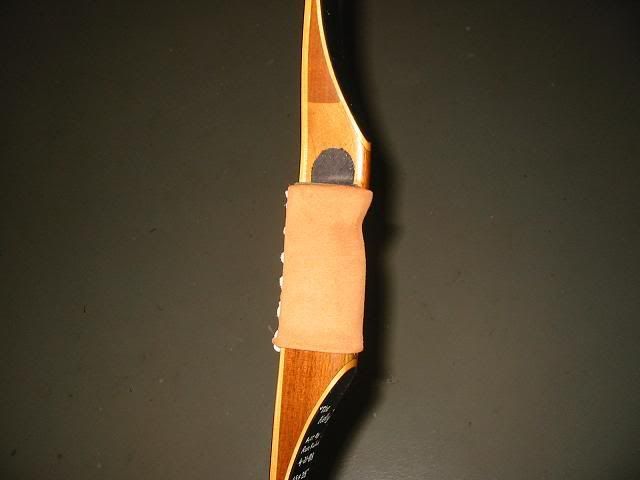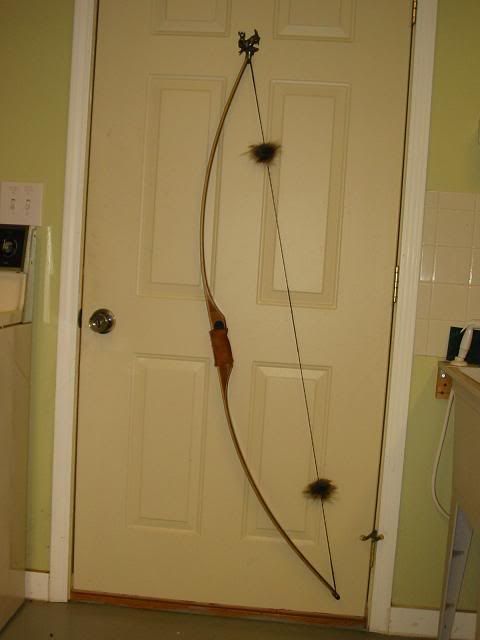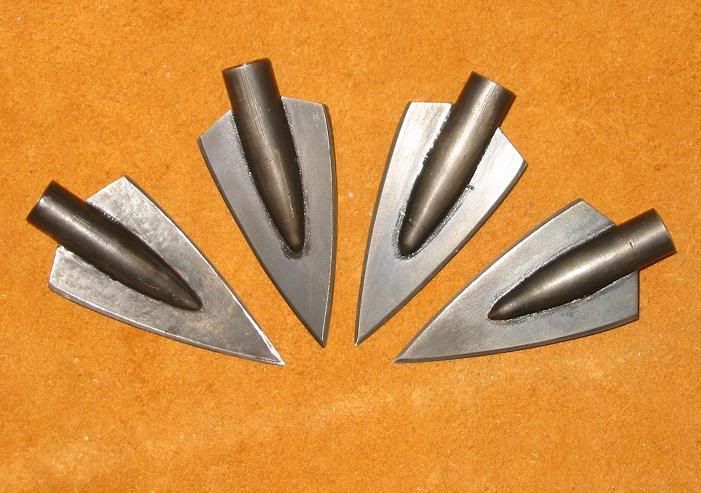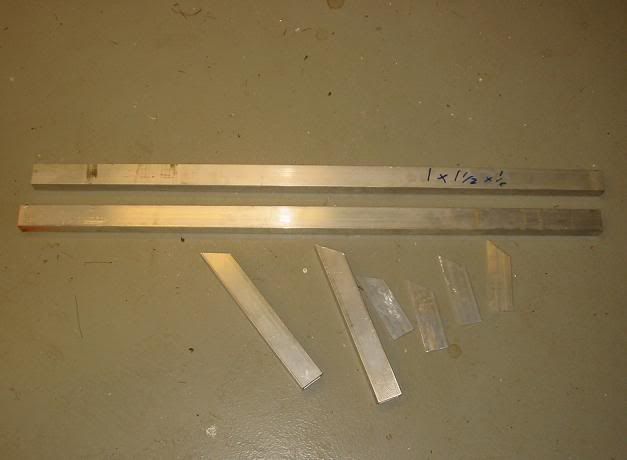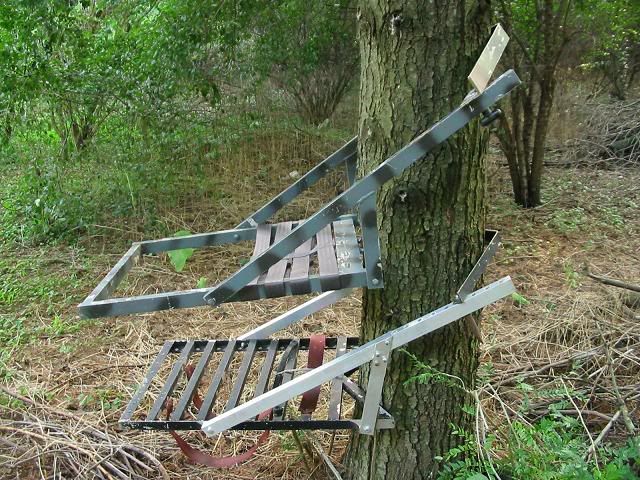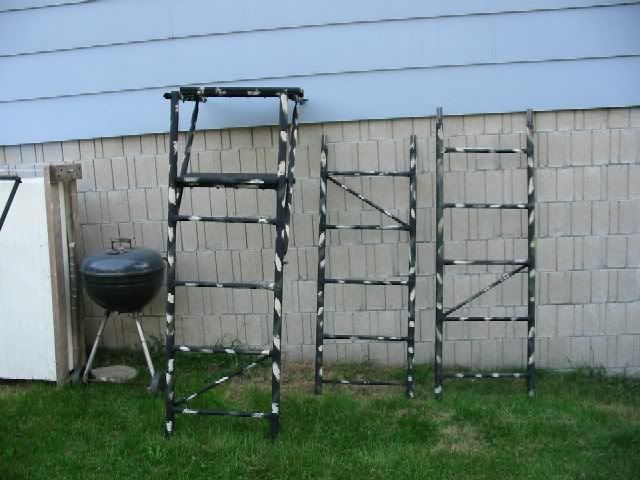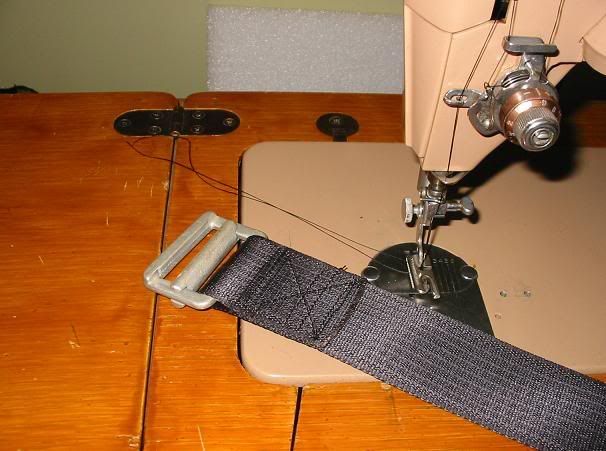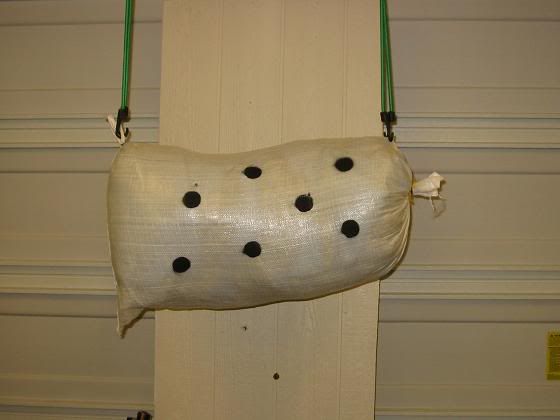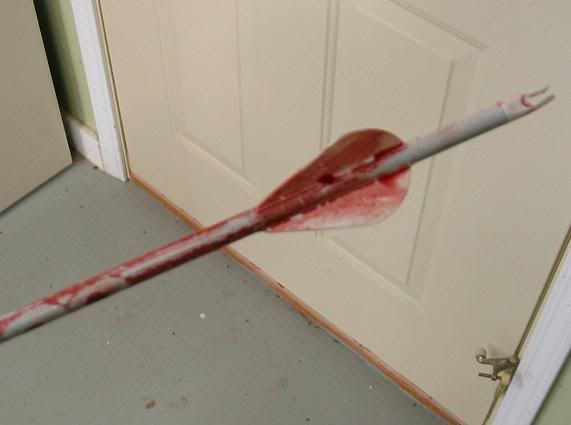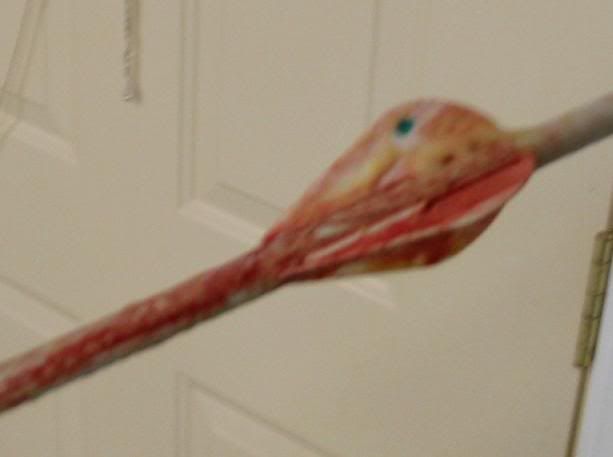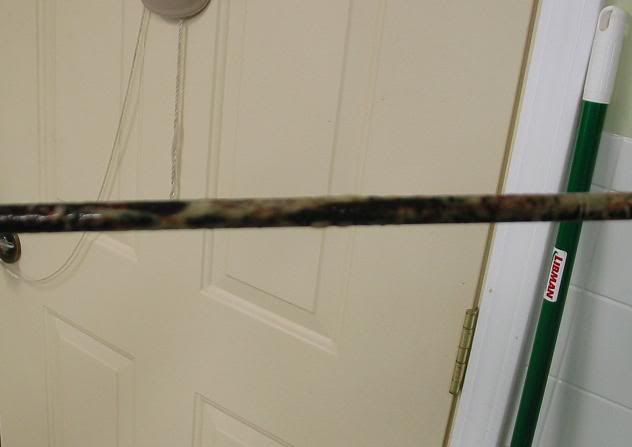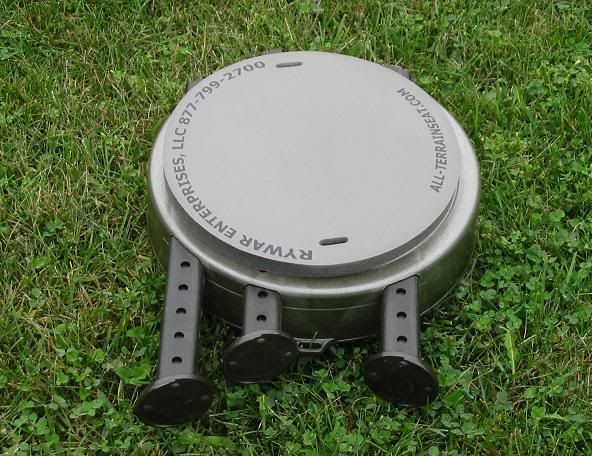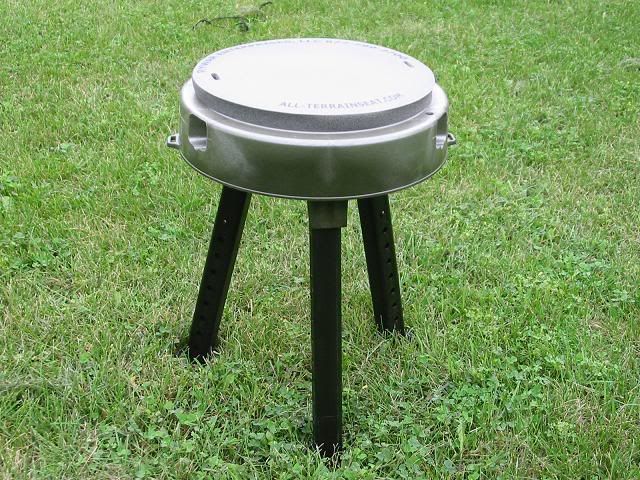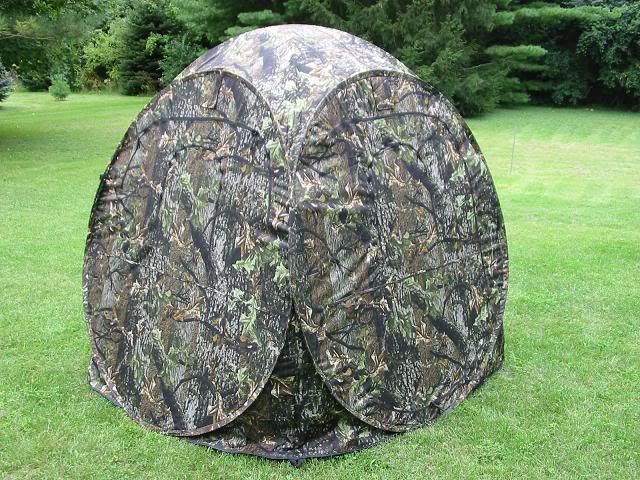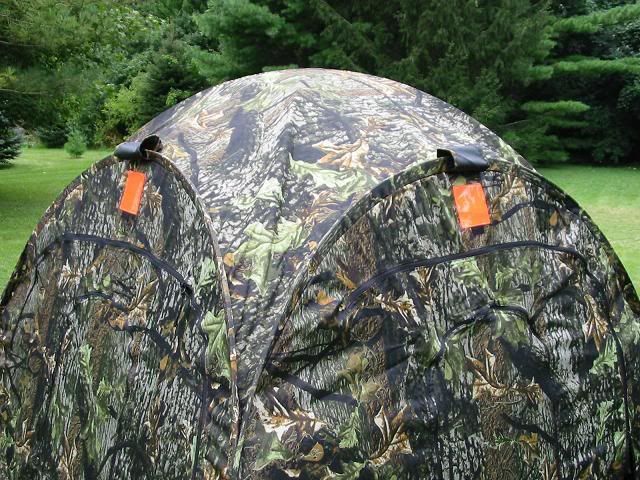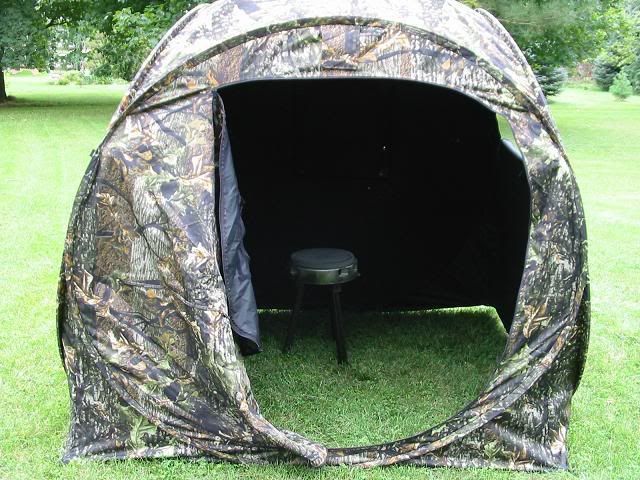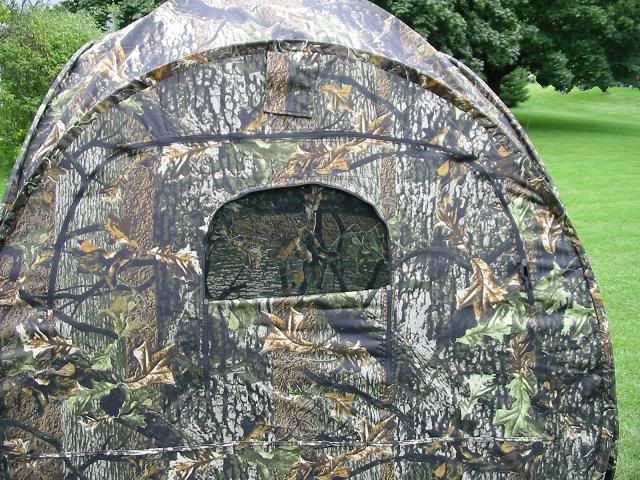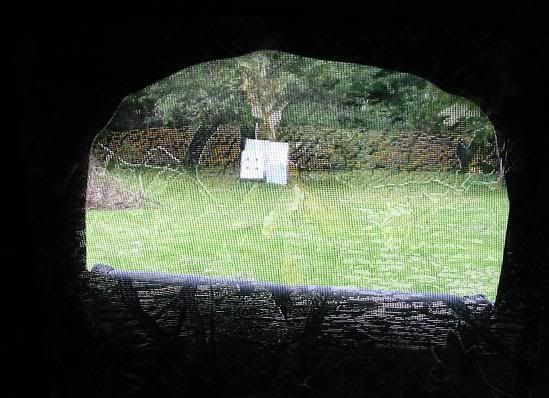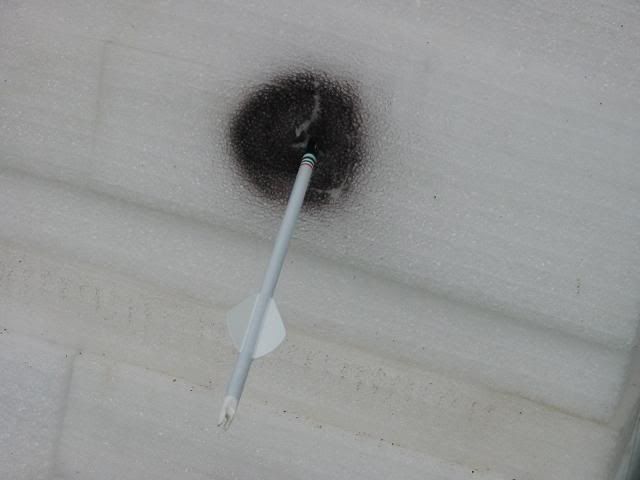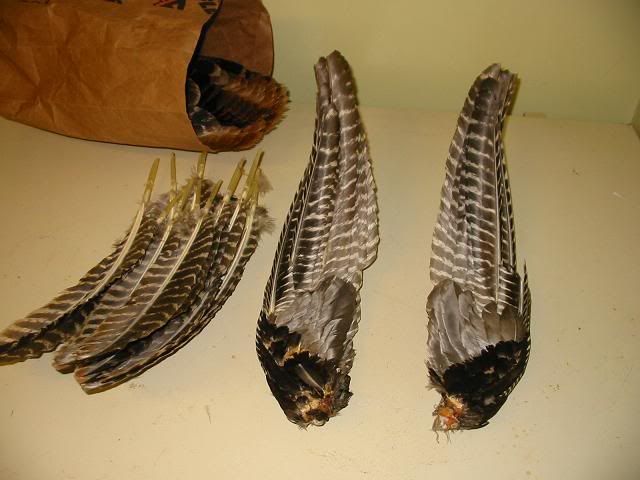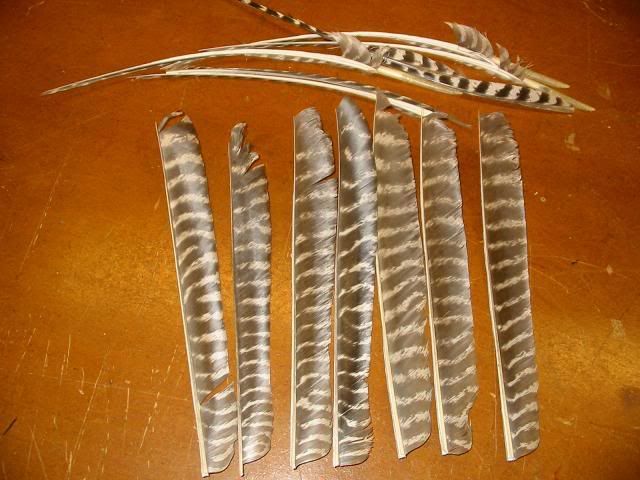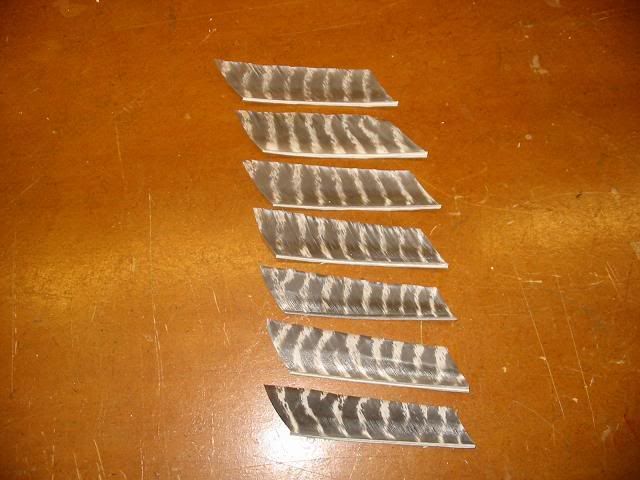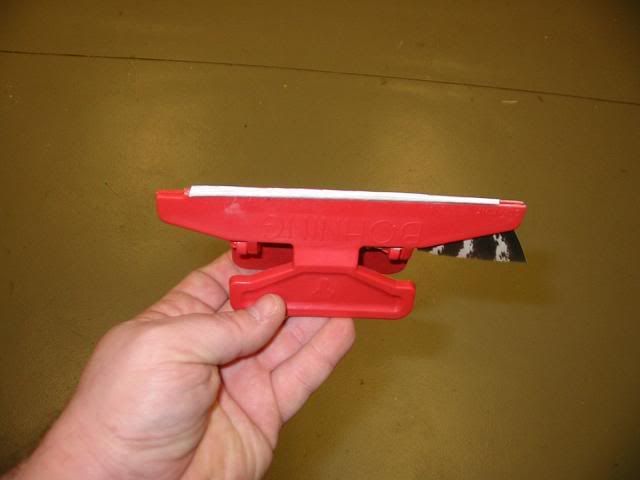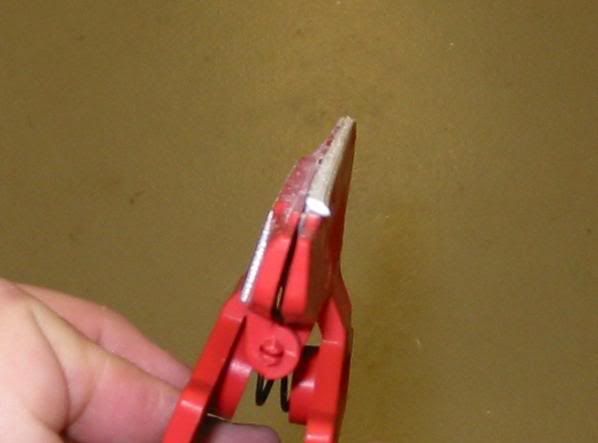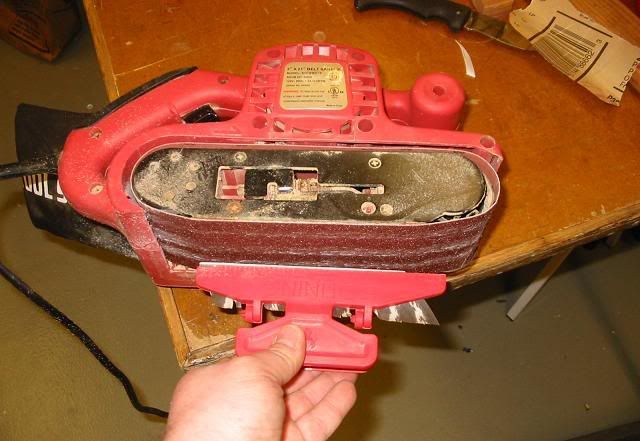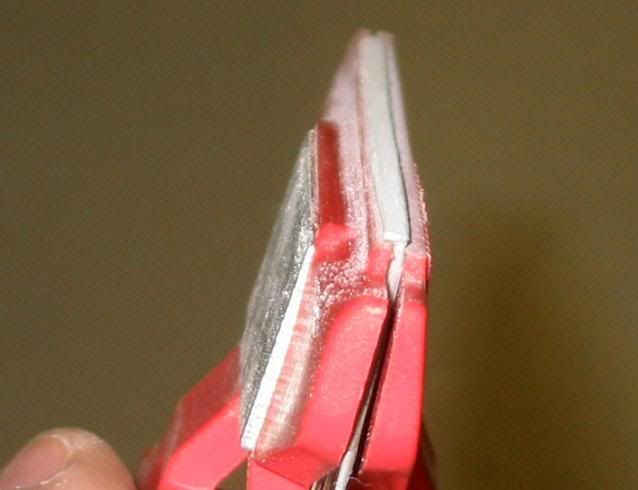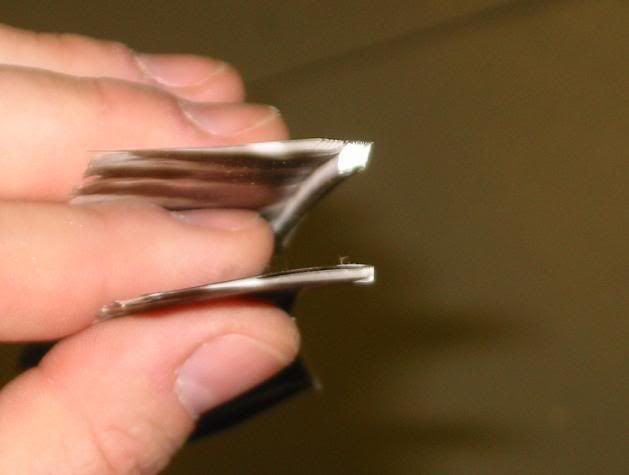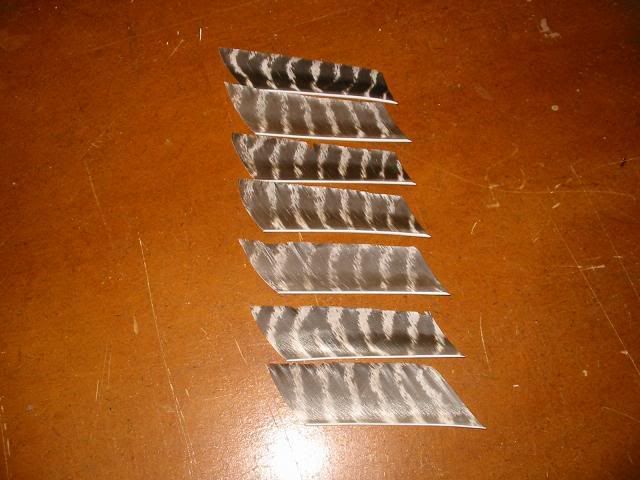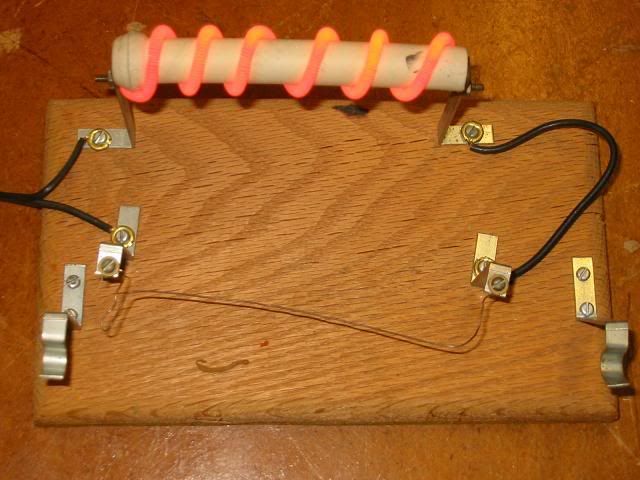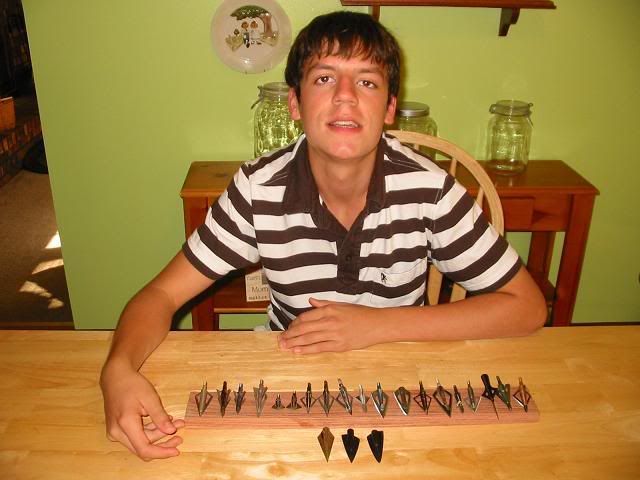331
Archery / Homemade leather hip quiver
« on: October 24, 2007, 06:11:17 AM »
After searching for the hip quiver design that I want, I started the project. I used cardboard to make a template for the back of the quiver.
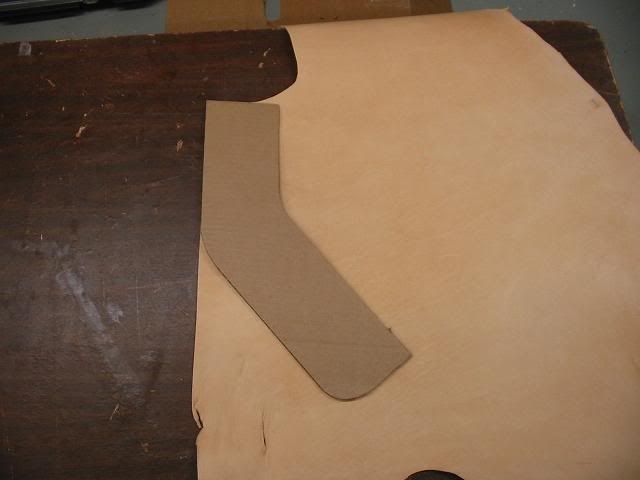
Then cut the quiver face.

I wet the leather of the quiver face and spent some time tooling it. I added the "K" so it matches the arm guard.

As long as I had the leather wet. I creased and folded the top of the face (where the arrows will slide in) to keep it from swelling and getting fuzzy from the field points hitting it.
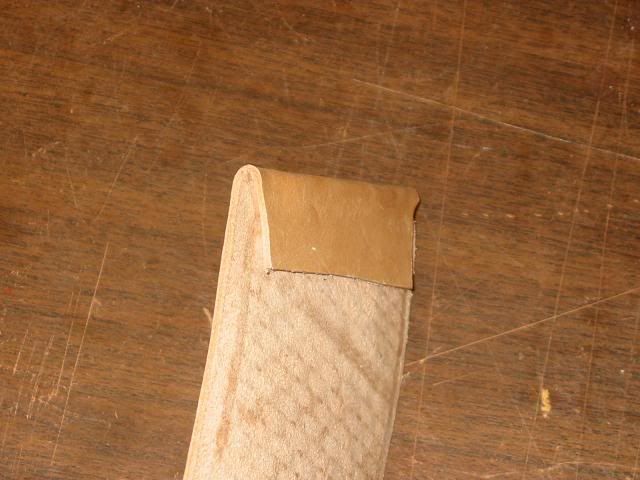
I stamped the upper/back portion of the hip quiver with a pattern I sketched on the leather. The deer hoof and the oak leaves were stamps. I framed it with a rope stamp. I also cut two holes for the belt clips.
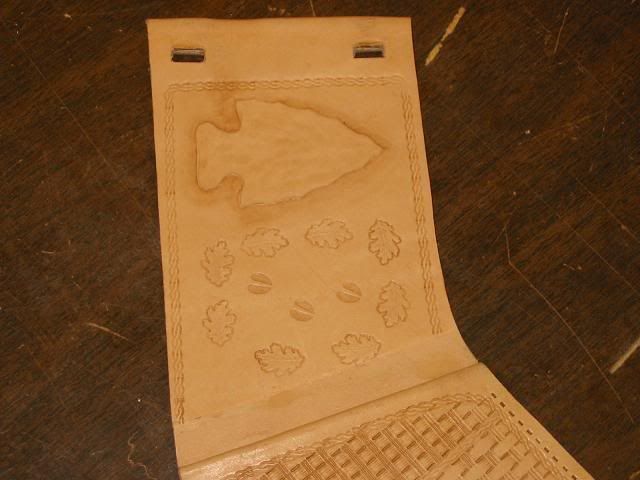
I used the forked punch for the stitching holes and used a 2 mm leather thong for sewing the two halves together.
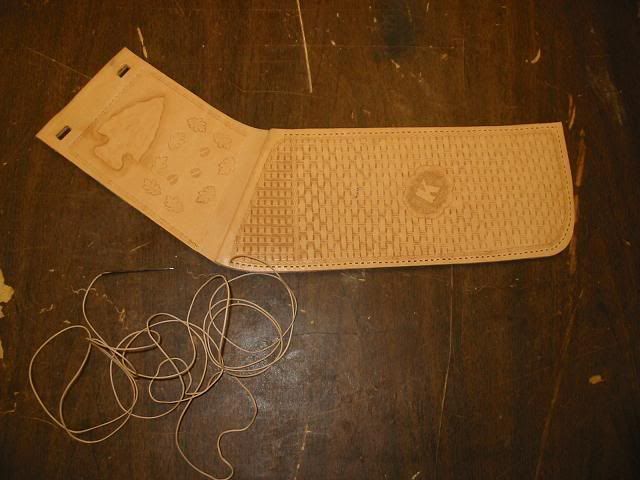
I was great to sew with and it is very strong.
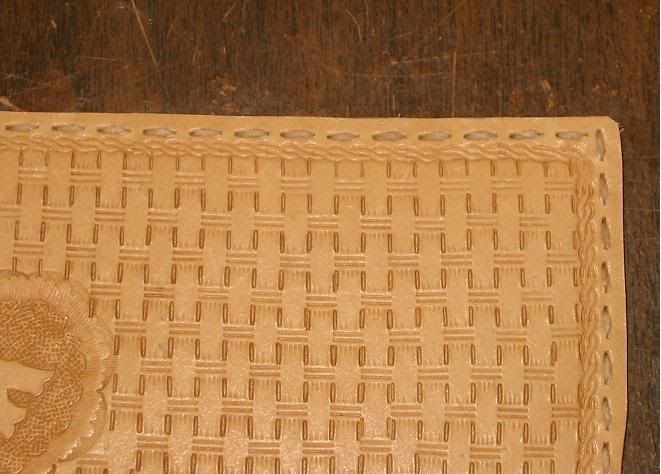
I forgot to take pics of one step. I cut up a very thin plastic cutting board and used rubber cement to attach them to the inside faces of the quiver. This will allow the arrows to slide in and out of the quiver without wearing it down and it added some stiffness. I left a short amount it sticking out on the back face to act as a buffer for when I am inserting arrows.
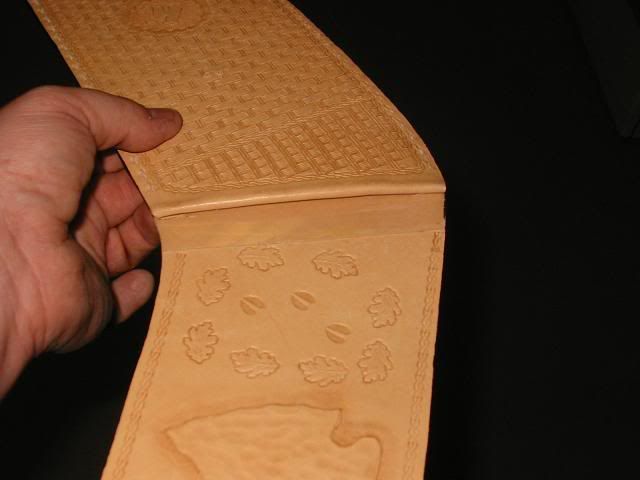
After stitching both halves, I trimmed then with a razor knife so both edges were even. I then used edge kote to seal and waterproof the end grain so it will not swell or get fuzzy.
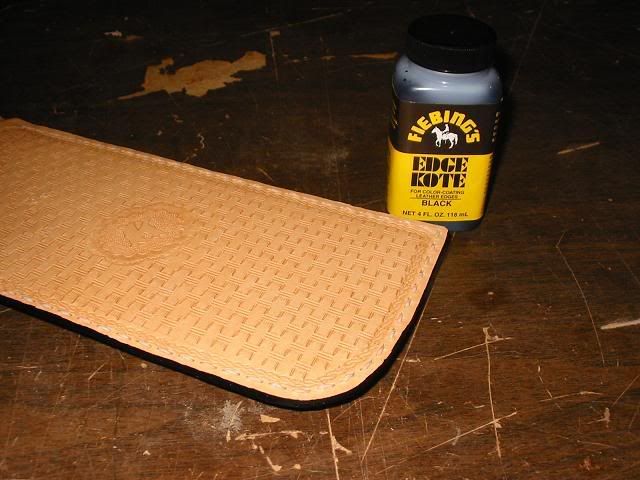
I then gave the outer surfaces two coats of super sheen to seal and waterproof the leather as well as give it a nice shine.
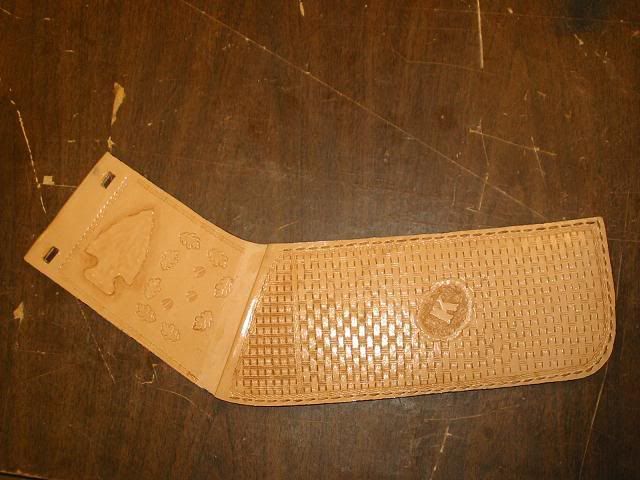
I'm guessing that over time, the quiver will get flexible or loose and the arrows won't be held as tightly as they are when it's new.
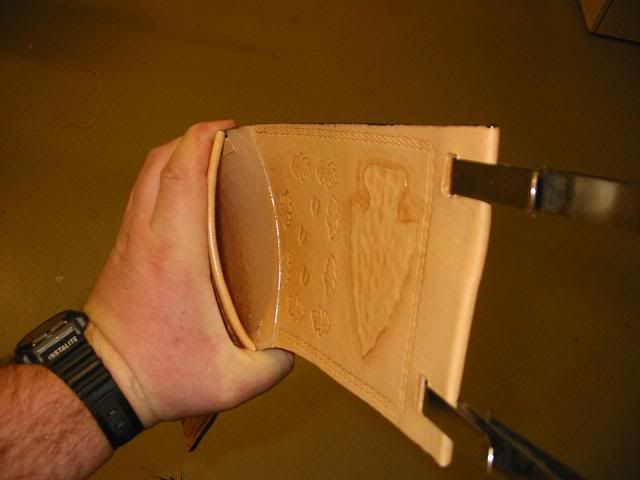
to cure this, I punched two holes through both sides of the quiver so that I can tie it closed with a leather thong. To dress up this feature I cut an antler button and then decided to add some bear claws to the ends of the thong. I have a few bear claws packed away in salt and borax.

After cleaning off the toe jam and giving them a coat of polyurethane. I had done my first bear manicure.
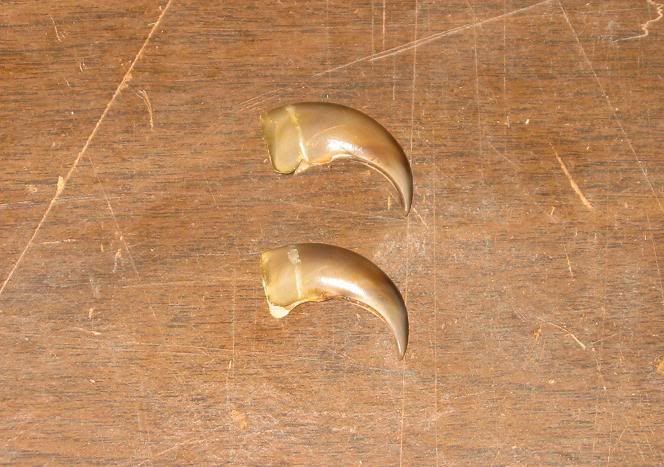
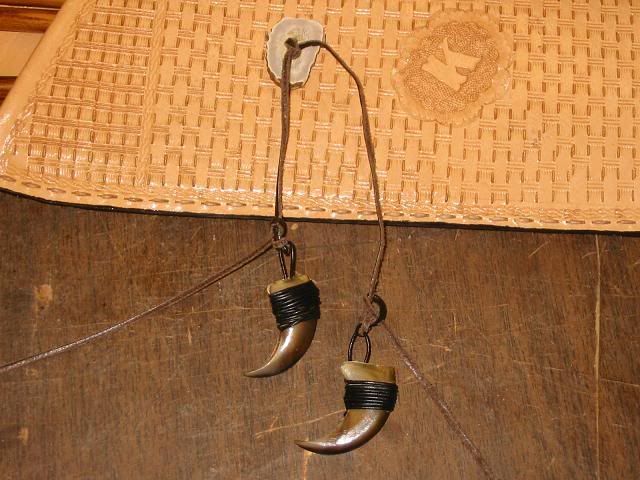
I had my son model the quiver for me. I used two belt clips to hold it in place. It holds 6 arrows very well.
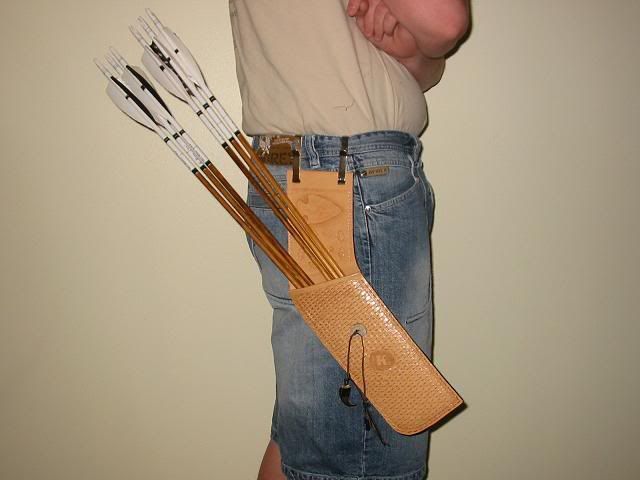

Then cut the quiver face.

I wet the leather of the quiver face and spent some time tooling it. I added the "K" so it matches the arm guard.

As long as I had the leather wet. I creased and folded the top of the face (where the arrows will slide in) to keep it from swelling and getting fuzzy from the field points hitting it.

I stamped the upper/back portion of the hip quiver with a pattern I sketched on the leather. The deer hoof and the oak leaves were stamps. I framed it with a rope stamp. I also cut two holes for the belt clips.

I used the forked punch for the stitching holes and used a 2 mm leather thong for sewing the two halves together.

I was great to sew with and it is very strong.

I forgot to take pics of one step. I cut up a very thin plastic cutting board and used rubber cement to attach them to the inside faces of the quiver. This will allow the arrows to slide in and out of the quiver without wearing it down and it added some stiffness. I left a short amount it sticking out on the back face to act as a buffer for when I am inserting arrows.

After stitching both halves, I trimmed then with a razor knife so both edges were even. I then used edge kote to seal and waterproof the end grain so it will not swell or get fuzzy.

I then gave the outer surfaces two coats of super sheen to seal and waterproof the leather as well as give it a nice shine.

I'm guessing that over time, the quiver will get flexible or loose and the arrows won't be held as tightly as they are when it's new.

to cure this, I punched two holes through both sides of the quiver so that I can tie it closed with a leather thong. To dress up this feature I cut an antler button and then decided to add some bear claws to the ends of the thong. I have a few bear claws packed away in salt and borax.

After cleaning off the toe jam and giving them a coat of polyurethane. I had done my first bear manicure.


I had my son model the quiver for me. I used two belt clips to hold it in place. It holds 6 arrows very well.


